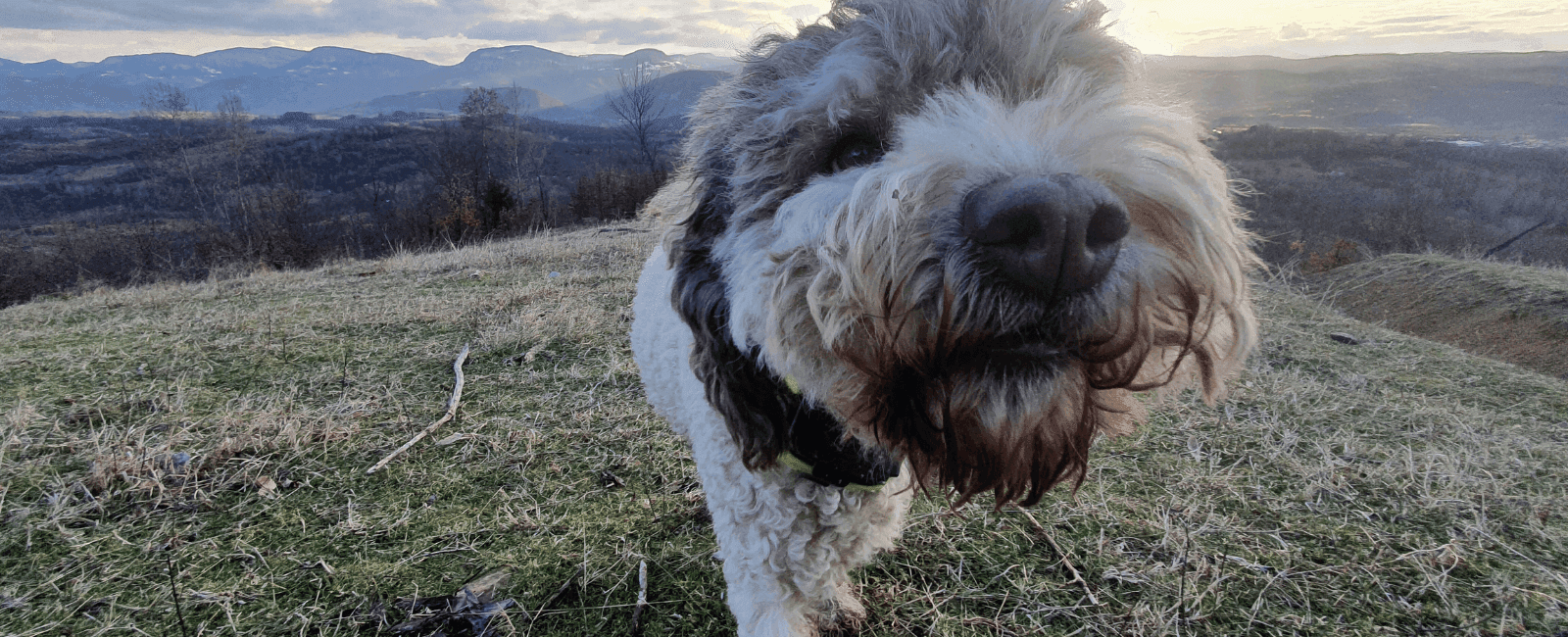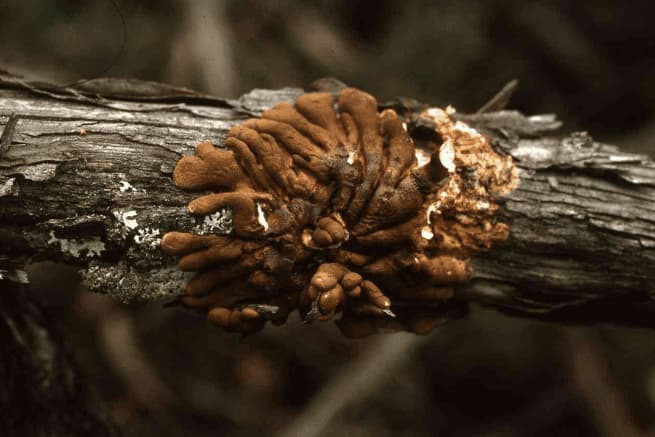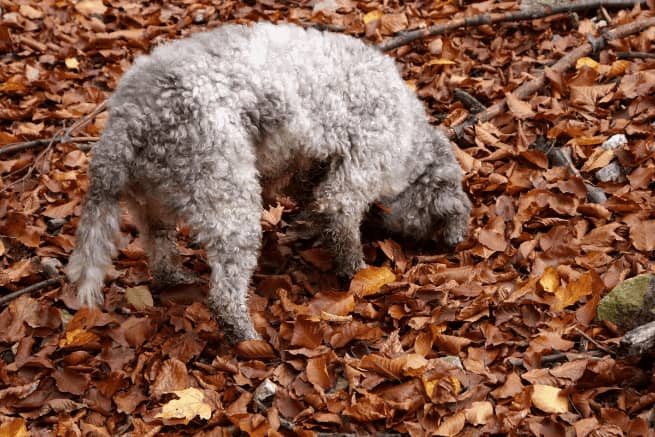

You may have heard of truffle-hunting dogs, but Daisy, a seven-year-old Italian water dog, could be the first to use her remarkable sense of smell to detect a critically endangered endemic fungus. Daisy has been trained to detect the elusive tea tree finger fungus (Hypocreopsis amplectens), a species teetering on the brink of extinction. If this technique can be applied to other wildlife detection canines, dogs could be the solution to tracking down rare fungi for conservation efforts.
Fungi under threat

Image source: Geoff Lay via Wikimedia Commons
Fungi play a major role in maintaining an ecosystem. They cycle nutrients back into the earth, have symbiotic relationships with plants, and help maintain healthy soil. However, habitat loss, pollution, and climate change have greatly threatened fungal species across the world, thereby threatening global ecosystems as a whole.
The tea tree finger fungus is only known to be found in six locations in Victoria, Australia. The species is known for its unique shape, resembling thick, dark fingers that wrap around the stems of trees and shrubs. Conservation scientist Dr. Michael Amor has only seen less than 100 specimens in his several years of research. This is because the “very specialized species” requires specific environmental conditions to thrive. As a mycoparasite, the fungus “obtains its food from another fungus,” says Dr. Amor. “That means the right plants have to be abundant to suit the wood-rotting host fungus.”
The tea tree finger fungus is an indicator of environmental health, yet its rarity raises concern about the ecological state of the eastern coast of Victoria. The fungus seems to be incredibly sensitive to human impact and environmental changes, so despite its ecological significance, its scarcity makes it difficult for researchers to fully understand it.
Daisy to the rescue
Wildlife detection dogs are used to sniff out rare or hard-to-find species of plants and animals. Yet until recently, these dogs have never been used for fungi conservation.
While Daisy’s breed is traditionally used for truffle hunting, her handler, Dr. Rutter, has worked with her for six years to detect the smell of other endangered species, such as the earless dragon and Tasmanian devil. Nonetheless, despite her smelling abilities, training Daisy to detect the tea tree fungus was a difficult task.
“It was a bit of a long process because it’s such a rare fungus, opportunities to train her and to find the fungus are quite limited,” explained Dr. Rutters. “But after some training sessions and some pretty dedicated detection dog sniffing, we got there in the end and were able to find it in the wild.”
The future of fungal conservation

According to a recently published study in iScience, Daisy outperformed humans in detecting the fungus, with a greater proportion of targets found and fewer false negatives (1).
Daisy’s success is just the beginning of a broader effort to conserve endangered fungal species. By training wildlife detection dogs to identify fungi, conservationists can cover larger areas more efficiently and detect rare species that would otherwise go unnoticed.
References
- Amor, Michael D, Shari Barmos, Hayley Cameron, Chris Hartnett, Naomi Hodgens, La Toya Jamieson, Tom W May, Sapphire McMullan-Fisher, Alastair Robinson, and Nicholas J Rutter. 2024. “On the Trail of a Critically Endangered Fungus: A World-First Application of Wildlife Detection Dogs to Fungal Conservation.” IScience, April, 109729–29. https://doi.org/10.1016/j.isci.2024.109729.


